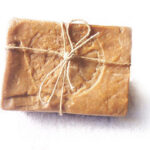Breastfeeding is a vastly rewarding experience that has extensive benefits to both mother and baby. More and more mothers are choosing to breastfeed their baby. However, many moms aren’t aware of what measures they can take to build their milk supply from day one. Further, many don’t realize how some things that seem harmless can be damaging to their milk supply. Luckily, by having the following information on this topic a mother and baby might be able to breastfeed for as long as the pair wishes.
1. Empty the breasts as completely as possible, and in the first weeks of life, empty them often. However the term “empty” is deceptive as there will always be trace amounts of milk left in the breasts. Breastmilk production is all the law of supply and demand. If at least one breast isn’t being thoroughly drained, the body will not be triggered to increase milk supply. The more often breasts are emptied, the more milk will be produced. The general recommendation is to nurse a minimum of every 2-3 hours during the day and every 4 hours through the night until baby has achieved birth weight or has shown solid weight gain pattern (5-7 oz. per week for newborns). The old adage of “never wake a sleeping baby” can be very harmful to the nursing relationship in those early weeks of life. However, for the first 12-24 hours the 2-3 hour rule shouldn’t be followed stringently. Fresh newborns do need sleep; they have received a great deal of nourishment in womb and have plenty of fat stores. Ideally, the baby should be nursed shortly after birth. If the baby refuses to latch, the mother should listen to him or her. The initial breastfeeding experience should not be a forced issue. In this instance, the baby needs plenty of skin-to-skin contact for several hours, then the mother can try again.
2. Achieve a good latch. A good latch is the key to the nursing relationship. Good latches will promote weight gain, a good milk supply, and less discomfort for the mom. If the mother is having difficulty with the latch, she should seek out help immediately. The longer she waits, likely the more adverse the effect.
3. Be sure to empty one breast before switching sides, and always at least offer the second breast. Judging what constitutes an “empty” breast can be tricky, especially to a new mother. Part of it is done by feeling and sensation. The breast should feel a great deal softer. Also, if she can compress your breast a few times and a good spray of milk comes out, she should try and keep nursing on that side a bit longer. The exception to this suggestion is for mothers who are suffering from Oversupply Syndrome or if a mother is using the switch nursing technique with a sleepy baby.
4. Use the technique of breast compression. This involves the mother expressing milk into the baby’s mouth when they are latched on, sucking, but not drinking. This is a highly effective technique. If things are going really well, the mother may not need it, but compression is great for increasing supply, for getting baby to take in more of the early colustrum, and getting a sleepy baby to finish the breast. It is beneficial to use this technique from the first day of life.
5. Avoid scheduled feedings. Scheduled feedings interfere with the supply and demand nature of feeding and often the consequences of this are seen a few months later rather than immediately. After baby has established a good weight gaining pattern, let the baby set the pace of feeds. Follow the guidelines detailed in the first point for how often to feed in the initial weeks.
6. Be hesitant giving bottles. The best thing to do is wait until week 5-6, and slowly begin bottle introduction. The danger to using bottles before this time is that it can lead to nipple confusion and also reduce mother’s milk supply. If supplements are necessary, consider alternate methods of feeding the supplement other than through bottles.
7. Avoid the following herbs, as they can decrease supply. Black Walnut, Chickweed, Herb Robert, Lemon Balm, Oregano, Parsley, Peppermint /Menthol, Periwinkle Herb, Sage, Sorrel, Spearmint, Thyme, Yarrow.
8. Drink Mother’s Milk Tea. This tea is made from various herbs that have long been used to increase and build milk supply. To simplify, make a thermos at the beginning of the day and sip while nursing. Simply developing a routine such as this can also promote let-down.
9. Be mindful of medications. Birth control pills have a notorious reputation for decreasing supply. Cold remedies, particularly antihistamines, can also have an adverse effect.
10. Eat the appropriate number of calories per day. Dieting is not recommended until two months post partum and should be monitored so as not to loose too much weight too quickly.
11.Drink to thirst. Generally 48-64 oz per day. Contrary to common opinion, mothers do not need to guzzle water. In fact, over-hydration can actually cause supply problems.
12.Consider avoiding pacifiers, or limiting their usage until weeks 3-4. New research is showing a good argument that this inhibits the baby to feed when hungry.
All of these suggestions can help establish and maintain a better breastfeeding relationship between mom and baby. However, if the mother suspects problems despite following these measures, seek out the help of a lactation consultant or La Leche League leader immediately. By having the correct facts and educated help, hopefully mother and baby will be able to nurse as long as is mutually desirable.







